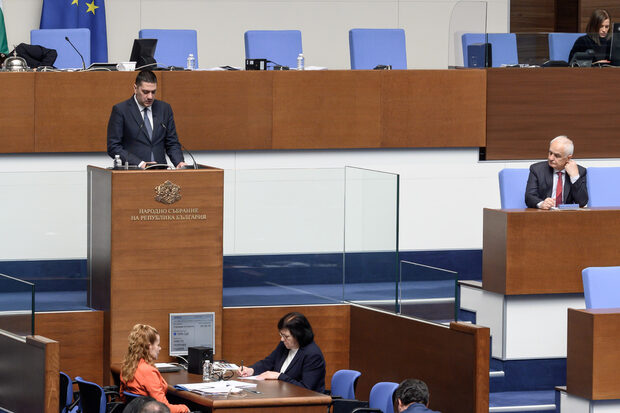Bulgarian Nuclear power plant Kozloduy has always operated using Russian nuclear fuel, a longstanding tradition that will likely end soon due to the European sanctions imposed on Russia. In the meantime, Bulgaria has to find an alternative supplier - even though it has made little progress in that direction in recent years. Many other countries from the former Eastern Bloc have tried to do so by diversifying their nuclear fuel sources, but this has proved a lengthy process.
The likely scenarios
Within just 17 months, Unit 5 of Bulgarian Nuclear power plant in Kozloduy will have to be operated using nuclear fuel from American company Westinghouse. If this deadline is not met there is a potential risk that American nuclear fuel might not be able to be used in the Bulgarian nuclear plant until at least 2030. There is also a risk that fuel licensing processes will take more than 17 months. Many other analyses are also needed by that time. Even the control systems must get reconfigured so that they synchronize with Russia, which will prove to be a hard job in the current political environment.
The other possible alternative supplier of the plant, France's Framatome, could supply as early as 2025, but it also uses Russian licenses to produce nuclear fuel cartridges. This makes it more easily compatible with the needs of the Kozloduy NPP, but this contravenes the November 3rd decision taken by the energy commision in the Bulgarian parliament to diversify supplies away from Russia.
The nuclear plant itself has a reserve of Russian fuel for one refueling of Unit 5 (in May 2023) and for five refuelings of Unit 6 (every subsequent year until October 2027). For now, supplies from Russia continue according to the established plan (twice a year) despite the war, but no one knows for how long.
The aforementioned scenarios are all part of the complex saga surrounding the diversification of nuclear fuel at the Kozloduy NPP. The technical issues are made more complicated because they are overshadowed by political concerns. Decisions taken in the next few months will likely have a huge financial impact, possibly to the tune of hundreds of millions of euros.
How do you fuel a nuclear plant?
Unlike thermal power plants, which can use different types of coal or natural gas, nuclear plants must use a specific type of fuel. The fuel used by the Romanians, for example, is not compatible with Bulgaria's Kozloduy NPP. There are differences not only in the cartridges for the fuel itself, but also in the uranium that is used for them. There are even small differences between the fuel used by units 5 and 6 of the Bulgarian plant. Therefore, the pool of potential suppliers licensed for this work becomes extremely small.
In addition, a unit is not loaded at once, but only 25% of the cartridges are replaced every year. Each new charge has a lifespan of four years, which means that the recharge cycle lasts every four years. Therefore, it is not possible to suddenly change all the fuel from one type to another because the diversification process also lasts 4 years (4 steps).
The supply
Currently, only the Russian TVEL has the right to supply fuel to the Kozloduy NPP - TVSA for the 5th unit and TVSA-12 for the 6th unit. According to the data of the plant itself, there are a total of 265 cartridges available on site, of which 54 are TVSA and can last for one recharge in May 2023, when the annual planned repair of the 5th unit will take place. The remaining 211 TVSA-12 cartridges could provide five reloads of the 6th unit, in October 2023, 2024, 2025, 2026 and 2027, respectively.
The contract with TVEL runs until December 31, 2025, and according to it, another 252 TVSA-12 cartridges (enough for 6 reloads of the 6th block) must be delivered. There is also an option for two additional deliveries of TVSA in 2024 and 2025, which, however, are not certain and need to be further specified.
Westinghouse has had a contract with the Kozloduy NPP, beginning January 2021, for the licensing and implementation of an alternative type of fuel (RWFA cartridges) only for the 5th unit of the plant. Currently, half of the planned revisions have been completed, but the more complex and technical ones still have to be examined. The deadline for the "handover" is January 2024.
Meanwhile, in February this year, Westinghouse submitted a budget bid for the supply of nuclear fuel for Unit 5 over a period of 10 years. However, it has not yet been signed by the plant's management.
On May 25, 2022, the French Framatome sent an official letter to the Kozloduy NPP in which it expressed interest in supplying nuclear fuel for the 5th and 6th units. The company has presented a plan to launch TVSA-T type nuclear fuel under license of TVEL, which will be produced in Lingen, Germany. It will actually be the same as the Russian TVSA-12, but it has yet to be licensed for the European market. It is expected to be available for Bulgaria in 2025.
On July 25 of this year, Framatome also sent a non-binding offer for the supply of fuel to the Bulgarian plant.
At current prices, the alternatives are 20-40% more expensive than Russian fuel.
What is the problem with Westinghouse?
Due to the difference in the characteristics of the cartridges, it turns out that the window for using American fuel will start closing from May 2024. If the deadline is not met and there are no additional supplies of TVSA fuel from Russia ( in the current geopolitical situation the Russians would hardly agree), the unit will have to be loaded with the TVSA-12 cartridges available at the headquarters. However, this means that it will no longer be possible to put American cartridges in it, until Westinghouse develops ones that work together with the TVSA-12. However, this could take 4-5 years.
Even if the US nuclear fuel licensing procedure is completed on time and deliveries are allowed in spring 2024, there are other important conditions before proceeding with the refueling of Unit 5. One of them is to adjust the fuel cell monitoring systems so that they can monitor both Russian (which will be 75%) and American (25%). For this to happen, it is necessary for Westinghouse to supply the relevant output data to the Russian Kurchatov Institute, which operates the relevant system software at the Kozloduy NPP. However, due to US sanctions against Russia, this is practically impossible at this stage.
What is the issue with Framatome?
At the moment, integrating French nuclear fuel into the Bulgarian plant seems easier because it is identical to the Russian one and will simply be produced in the EU. The first such cartridges are planned to be used at the Czech Temelin NPP in 2024 which will dictate more or less if it is successful or not.
However, due to its Russian license, this supplier may not be allowed to the Kozloduy NPP, if the request of the energy commission in the parliament (which must also be voted through in parliament) is implemented in practice. Thus politicians have to make a decision based not only on the geopolitical situation, but also on the technical aspects of changing nuclear fuel's source.
Bulgarian Nuclear power plant Kozloduy has always operated using Russian nuclear fuel, a longstanding tradition that will likely end soon due to the European sanctions imposed on Russia. In the meantime, Bulgaria has to find an alternative supplier - even though it has made little progress in that direction in recent years. Many other countries from the former Eastern Bloc have tried to do so by diversifying their nuclear fuel sources, but this has proved a lengthy process.












